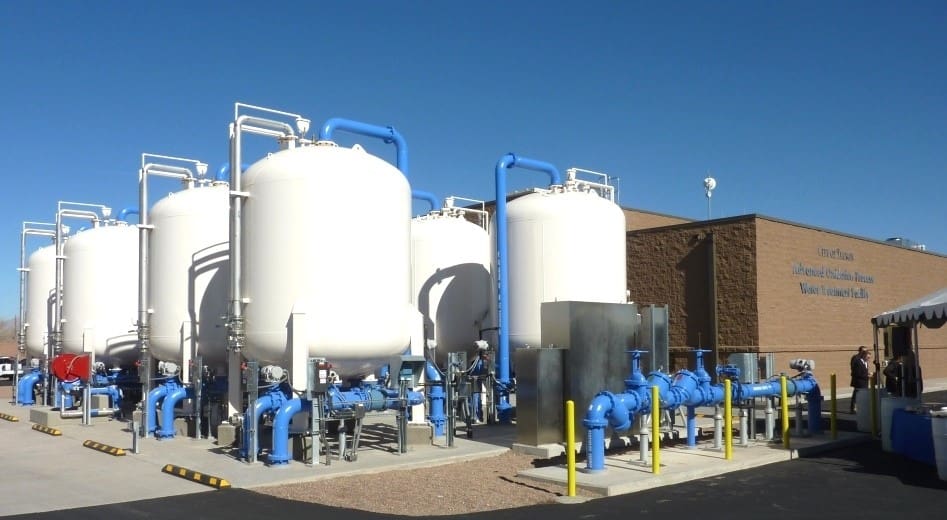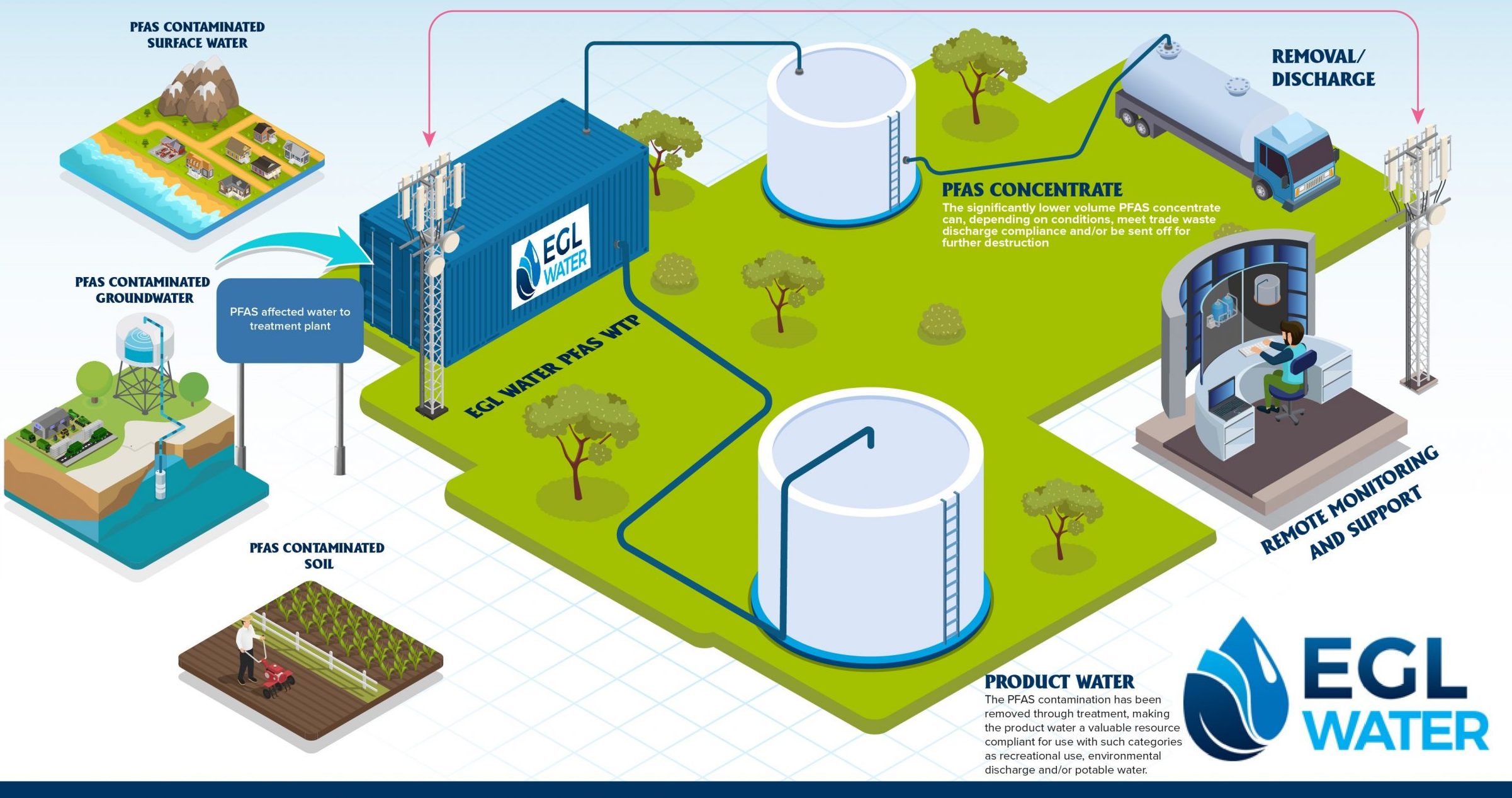Your Guide to PFAS Treatment Technologies and Advantages
The occurrence of PFAS contamination in water resources demands a detailed understanding of available therapy innovations. Each technology not only targets certain PFAS substances but also plays a critical role in boosting general water quality and protecting environmental stability.
Comprehending PFAS Contamination
Recognizing PFAS contamination is crucial for addressing its pervasive effect on environmental and human health and wellness (m270 pfas treatment). Per- and polyfluoroalkyl materials (PFAS) are a group of synthetic chemicals widely used in various industrial and consumer products because of their water- and grease-resistant homes. Frequently located in firefighting foams, non-stick cookware, and water-repellent fabrics, PFAS have entered the setting via manufacturing procedures, wastewater discharges, and seeping from garbage dumps
As soon as released, these materials continue the atmosphere, bring about extensive contamination of soil and water sources. Their special chemical structure, defined by strong carbon-fluorine bonds, renders them resistant to destruction, resulting in a phenomenon known as "forever chemicals." PFAS can collect in the human body and the food chain, potentially causing adverse health results, including immune system disturbance, developmental issues, and a boosted danger of particular cancers.
Regulatory companies and health companies are significantly acknowledging the importance of PFAS contamination, motivating efforts to monitor, examine, and reduce its results. Understanding the pathways of PFAS contamination is essential for notifying public policy and establishing effective methods to protect both environmental and human wellness.
Summary of Therapy Technologies
Various treatment modern technologies have been developed to address the obstacles posed by PFAS contamination in water and dirt. These technologies can be broadly categorized into numerous categories, each with its unique devices and performance in removing PFAS compounds.
One noticeable approach is ion exchange, which utilizes resin products to capture and remove PFAS from polluted water. This technique is especially reliable for short-chain PFAS and can achieve significant reductions in concentration degrees. An additional innovation, progressed oxidation procedures (AOPs), uses solid oxidants and ultraviolet light to break down PFAS into less dangerous materials. AOPs are ideal for dealing with a large range of PFAS compounds however might need cautious optimization to take full advantage of effectiveness.

Activated Carbon Filtration
Activated carbon filtering is a widely utilized method for the removal of PFAS from contaminated water, recognized for its capacity to adsorb a wide array of natural substances. This modern technology uses activated carbon, a very permeable product with an extensive surface area, which facilitates the binding of PFAS molecules with physical adsorption. The performance of triggered carbon in eliminating PFAS is influenced by several factors, consisting of the sort of carbon utilized, the contact time, and the concentration of PFAS in the water.
One of the advantages of activated carbon filtration is its versatility; it can be implemented in numerous arrangements, such as granular triggered carbon (GAC) systems or powdered activated carbon (PAC) systems. GAC systems are usually utilized in larger-scale applications, while PAC can be utilized in smaller or temporary arrangements. The modern technology is More hints fairly easy to run and maintain, making it obtainable for many water therapy facilities.

Ion Exchange Equipment
Ion exchange systems represent an additional reliable technique for the removal of PFAS from infected water, complementing approaches like activated carbon purification. These systems operate the concept of trading ions in the water with ions held on a resin material. Ion exchange materials can be particularly created to target the negatively billed PFAS compounds, effectively recording them and allowing cleaner water to travel through.
One of the main benefits of ion exchange systems is their ability to get rid of a wide variety of PFAS, consisting of both long-chain and short-chain versions. This adaptability makes them ideal for various applications, varying from local water treatment to commercial procedures. Additionally, ion exchange systems can commonly achieve lower discovery limitations for PFAS contrasted to some various other treatment techniques, hence enhancing water quality.
Nevertheless, it is important to keep an eye on and take care of the regeneration of ion exchange media, as the performance can decline gradually as a result of saturation. Proper upkeep and substitute of the resin are vital for sustaining the system's performance. In general, ion exchange systems give a trusted and efficient solution for PFAS elimination, adding dramatically to safe alcohol consumption water criteria and environmental management.
Advanced Oxidation Processes
Advanced Oxidation Processes (AOPs) use effective oxidants to properly deteriorate PFAS compounds in polluted water. These innovative therapy approaches produce highly reactive varieties, such as hydroxyl radicals, that can damage down intricate PFAS molecules right into less hazardous results. m270 pfas treatment. AOPs typically utilize combinations of ultraviolet (UV) light, ozone, hydrogen peroxide, or Fenton's reagent, boosting the oxidation potential and improving deterioration efficiency
The key benefit of AOPs hinges on their ability to target a broad variety of PFAS substances, consisting of both long-chain and short-chain variants. This flexibility is important, as PFAS contamination often includes combinations of various substances with varying view publisher site chemical structures. Furthermore, AOPs can be incorporated right into existing water treatment systems, making them a useful service for lots of districts and sectors.
However, the implementation of AOPs can be resource-intensive, calling for mindful factor to consider of functional prices and energy intake. In addition, while AOPs are reliable in breaking down PFAS, they may not entirely get rid of all results, demanding additional treatment actions - m270 pfas treatment. Overall, AOPs stand for a promising method for resolving PFAS contamination, adding to cleaner water resources and improved public health security

Conclusion
In final thought, dealing with PFAS contamination calls for a comprehensive understanding of available treatment technologies. Turned on carbon filtering, ion exchange systems, and progressed oxidation procedures each existing special benefits for properly eliminating these damaging compounds from water resources. By choosing the appropriate modern technology, areas can boost water quality, shield public health and wellness, and reduce the ecological dangers related to Website PFAS direct exposure. Continued research and application of these methods are crucial for efficient monitoring of PFAS contamination in impacted locations.